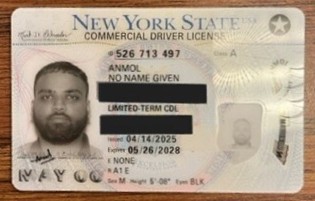The First of the Best Guides to Understanding the Constitution
By Bill Graves
In the teaching of the U.S. Constitution, should a law professor direct his students to any particular guides to enable a more accurate understanding of that document? There are already some proposed guides that are in reality not guides, but roads to perversion of the Constitution.Justice Oliver Wendell Holmes seemed to be believe that the Constitution rests on nothing at all – or rather on no principles immune from the whims of transient majorities. Justice Wm. O. Douglas based his decisions on gut reactions. Justice William Brennan concluded through his “overarching principles” he somehow found in the Constitution (but fails to state where) that “the evolutionary process is inevitable and, indeed, it is the true interpretative genius of the Constitution’s text.” Moreover, the Supreme Court itself has held in Trop v. Dulles (1958) that in construing the Constitution’s “cruel and unusual” punishment clause, the Court must look to “the evolving standards of decency that mark the progress of our maturing society.” Yet, no reference is made in the Constitution’s text to “whims of transient majorities,” gut reactions, or evolutionary processes.
On the other hand, James Madison, the Father of the Constitution and chief architect of the Bill of Rights, said “if the Constitution is not construed in the same sense in which it was written and ratified, there is no security for a faithful exercise of its powers.” At the same time, both Madison and Thomas Jefferson (our fourth and third Presidents), the chief author of the Declaration of Independence, believed there are legitimate guides for understanding the Constitution.
Jefferson’s last great dream, in which he succeeded, was to found a public University in Virginia. He and Madison believed that students should be instructed in the true “principles of government” upon which the Constitution of the United States was “genuinely based.”
Both Madison and Jefferson believed the Declaration of Independence was the best guide for understanding the Constitution. Madison and Jefferson and the University’s Board of Visitors held that the Declaration of Independence, America’s first and foremost founding document, was also “the first of the best of four enumerated guides to understanding the Constitution and our republican form of government.”(i) Moreover, Madison said the Declaration was “the fundamental act of union.” Jefferson said the Declaration is “an expression of the American mind.” Both Madison and Jefferson said the Declaration’s principles ought to be the norma docendi of the University’s faculty as to teaching the Constitution.
It is also very notable that President Abraham Lincoln clearly agreed with Madison and Jefferson that the Declaration of Independence is the first of the best guides to understanding the Constitution. Lincoln believed that the Declaration’s second sentence, committed the nation to the proposition “that all Men are created equal.” He believed not that slavery is unconstitutional, but that it was inconsistent with America’s fundamental identity. As Charles H. Cosgrove wrote, Lincoln crystallized this sentiment in the Gettysburg Address when he dated this Nation’s founding to 1776 (“Four score and seven years ago”). (ii)
In asserting that the Constitution is in effect based on the Declaration, Lincoln cites Proverbs 25:11, which states: “A word fitly spoken is like apples of gold in pictures of silver.” To Lincoln, the prosperity of America could not have been obtained without the Constitution and the Union. Yet, he said, these were not the primary causes of our great prosperity. It is something else.
That something he said, is the principle of “Liberty to all” derived from the Declaration of Independence which declares “We hold these truths to be self-evident, that all Men are created equal, that they are endowed by their Creator with certain unalienable Rights, that among these are Life, Liberty, and the Pursuit of Happiness.” This, Lincoln said, clears the path for all – gives hope to all – and, by consequence, enterprise and industry to all. Without these, our great prosperity could not have been obtained. Thus, to Lincoln, the principle of “Liberty to all” was the word fitly spoken in the Declaration and is the “apple of gold” to us while the Constitution and the Union are the picture of silver framed around the apple. Lincoln concluded: “The picture was made, not to conceal, or destroy the apple; but to adorn and preserve it. The picture was made for the apple - not the apple for the picture….So let us act, that neither picture, or apple shall ever be blurred, bruised or broken…”
Had the Supreme Court in Dred Scott v. Sanford (1857) accepted the “self-evident truth” that “all men are created equal” as the Declaration asserts, and not held that black men were not entitled to American citizenship regardless of whether they were enslaved or free, a Civil War may have been averted. Moreover, had the Supreme Court concluded as Jefferson had written in the Declaration that there is a Creator and our rights come from him – not Government, and that America’s founding was based on the “Laws of Nature and of Nature’s God” – which meant God’s law as revealed through nature and His moral law revealed in the Bible,(iii) the Court would not have excluded God from schools and the public square.
Justice David Brewer said: “It is always safe to read the letter of the Constitution in the spirit of the Declaration.”(iv) Prof. Harry V. Jaffa states that the Declaration of Independence “as seen by Jefferson and Madison, tells us why the political authority of the United States is also a moral authority, and why the physical force by which the United States may protect and defend itself is a moral force and not merely the expression of collective self-interest. Finally, it tells us why slavery must be regarded as an anomaly, a necessary evil entailed upon the Constitution, but not flowing from – or consistent with – its genuine principles.”(v) The Declaration also tells us why God, Christ and the Bible should not be excluded from the public square.
Bill Graves was formerly a Oklahoma State Legislator and an Oklahoma District Judge.
(i) Jefferson & Madison’s Guide to the Constitution, by J. David Gowdy, The Washington, Jefferson & Madison Institute 2011, 2nd Revised Edition. Madison and Jefferson listed three other “best” guides after the Declaration. They were, 2nd) The Federalist by Alexander Hamilton, James Madison and John Jay as “an authority to which appeal is habitually made by all, and rarely declined or denied by any as evidence of the general opinion of those who framed, and of those accepted the Constitution of the United States, on questions as to its genuine meaning.” Third on the list were the Resolutions of the General “Assembly of Virginia in 1799 on the subject of the alien and sedition laws, which appeared to accord with the predominant sense of the people of the United States. Fourth on the list is the Farewell Address of President George Washington, as conveying political lessons of peculiar value.
(ii) Cosgrove, The Declaration of Independence in Constitutional Interpretation: A Selective History and Analysis, University of Richmond Law Review, 107 (1998).
(iii) Gary Amos, Defending the Declaration: How the Bible and Christianity Influenced the Writing of the Declaration of Independence. (1989) 35.
(iv) Gulf, Colo. & Santa F3e Ry. V. Ellis, 165 U.S. 150, 160 (1897).
(v) Harry V. Jaffa, What Were the “Original Intentions” of The Framers of the Constitution of the United States. 10 U. Puget Sound Law Review, 351, 364 (1987).










Latest Commentary
Thursday 30th of October 2025
Thursday 30th of October 2025
Thursday 30th of October 2025
Thursday 30th of October 2025
Thursday 30th of October 2025
Thursday 30th of October 2025
Thursday 30th of October 2025
Thursday 30th of October 2025
Thursday 30th of October 2025